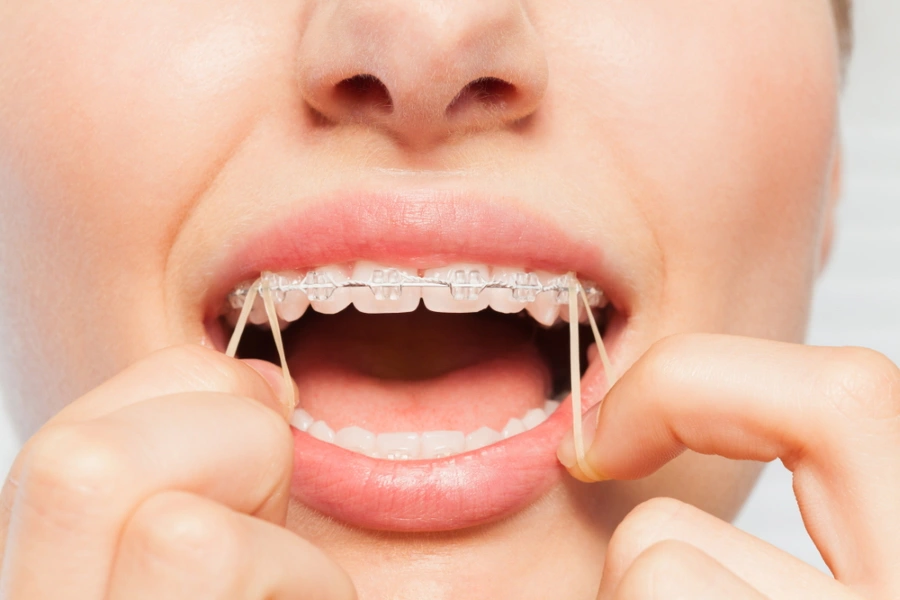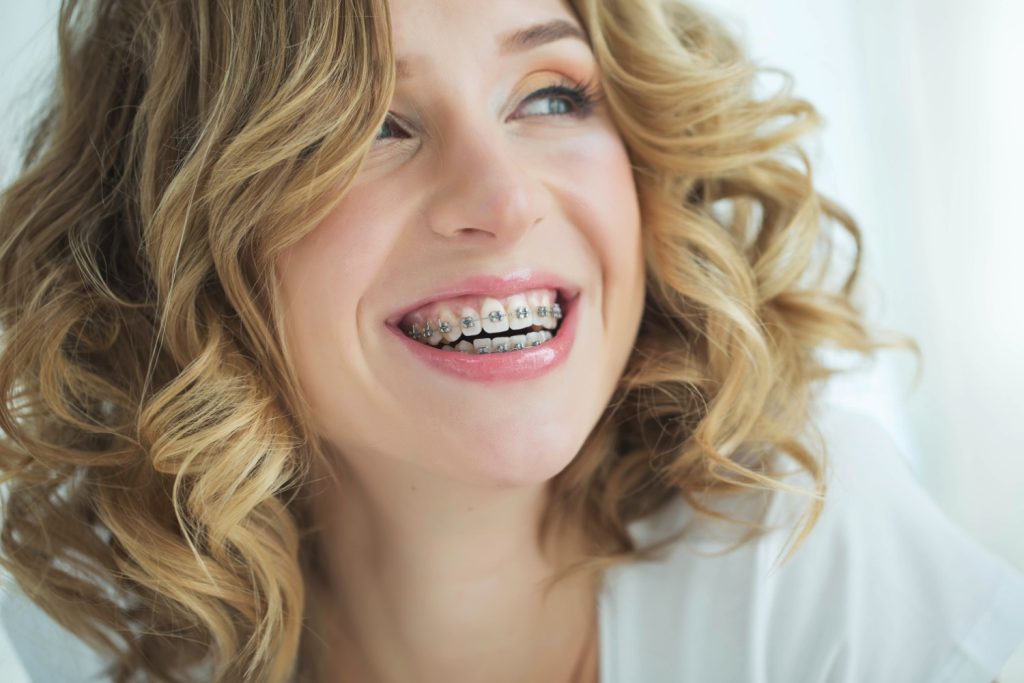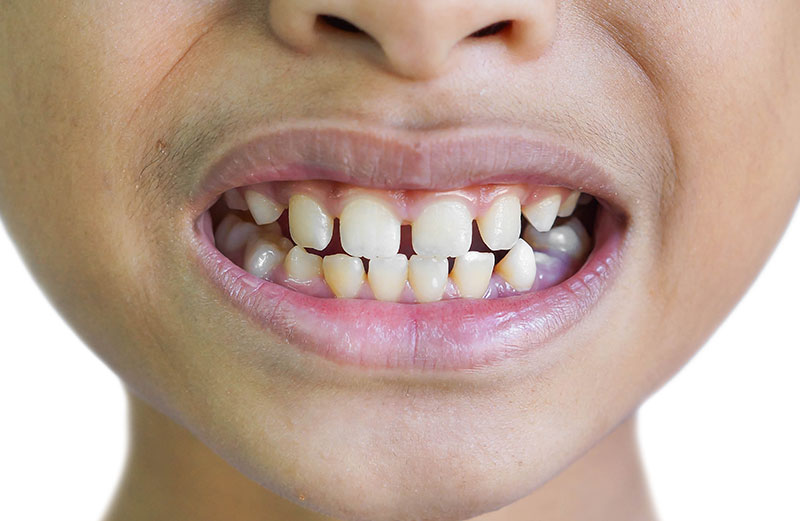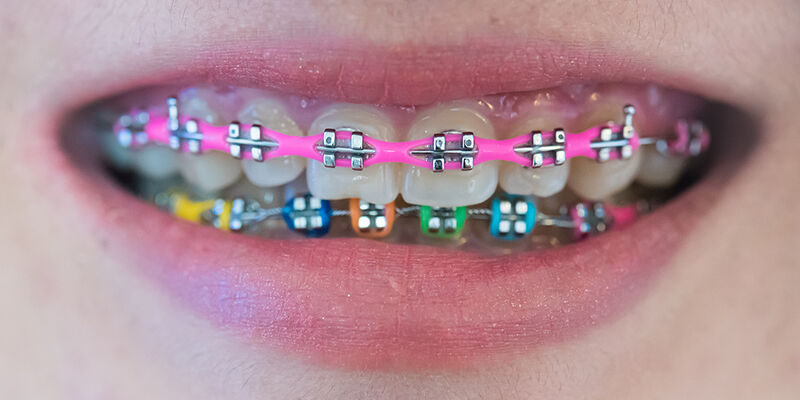How to wear rubber bands on braces for overbite

Orthodontic treatment is a multi-faceted process aimed at correcting dental and jaw alignment issues. Among the various orthodontic problems, an overbite is one of the most common and frequently addressed conditions. Rubber bands, also known as elastics, are an essential component of braces that help correct an overbite. This comprehensive guide will explain how to wear rubber bands on braces for overbite, the importance of these elastics, and provide practical tips for effective use.
Understanding Overbite and Its Impact
An overbite, also known as a deep bite, occurs when the upper front teeth significantly overlap the lower front teeth. This condition can lead to various dental problems, including:
- Wear and Tear on Teeth: Excessive overlap can cause abnormal wear on the lower teeth.
- Jaw Pain: Misalignment can result in jaw discomfort and pain.
- Aesthetic Concerns: An overbite can affect the overall appearance of your smile.
- Difficulty in Chewing and Speaking: Severe overbites can interfere with normal chewing and speaking functions.
Correcting an overbite is crucial for both functional and aesthetic reasons. Braces combined with rubber bands are a common and effective method for treating this condition.
The Role of Rubber Bands in Correcting Overbite
Rubber bands are small, stretchable bands that orthodontists use to apply additional pressure to the teeth and jaws. They are crucial for:
- Correcting Bite Issues: Specifically designed to correct overbites, rubber bands help move the upper teeth backward and the lower teeth forward, achieving proper alignment.
- Aligning Teeth: They aid in aligning the teeth more precisely, ensuring that the upper and lower teeth fit together correctly.
- Enhancing Treatment Effectiveness: Rubber bands enhance the overall effectiveness of braces, allowing for more comprehensive and quicker results.
Types of Rubber Bands Used for Overbite Correction
Orthodontic rubber bands come in various types, each serving specific purposes. For correcting an overbite, the most commonly used types are:
- Class II Elastics: These are used to correct overbites by connecting the upper teeth to the lower teeth in a way that moves the upper teeth backward and the lower teeth forward.
- Vertical Elastics: These elastics help align the upper and lower teeth vertically and can also aid in correcting overbites by promoting better jaw alignment.
How to Wear Rubber Bands on Braces for Overbite: Step-by-Step Guide
Proper placement and consistent use of rubber bands are essential for effective treatment. Here’s a detailed step-by-step guide on how to wear rubber bands on braces for overbite:
Step 1: Understanding Orthodontist’s Instructions
Before you start, ensure you understand the specific instructions provided by your orthodontist. They will guide you on:
- Which teeth the rubber bands should connect.
- The specific pattern or configuration for placement.
- How often to wear and change the rubber bands.
Step 2: Wash Your Hands
Maintaining good hygiene is crucial. Wash your hands thoroughly with soap and water before handling the rubber bands.
Step 3: Gather Your Supplies
You will need:
- A clean pack of rubber bands provided by your orthodontist.
- A small mirror to help you see the placement.
- Any tools provided by your orthodontist to assist in placing the rubber bands.
Step 4: Identify the Attachment Points
Using a mirror, identify the hooks or brackets on your braces where the rubber bands need to be attached. These are typically small hooks located on the brackets of your upper and lower teeth.
Step 5: Place the Rubber Band on the First Hook
Start by hooking one end of the rubber band onto the first attachment point on your upper teeth. Use your fingers or a small hook tool to help with placement.
Step 6: Stretch the Rubber Band to the Second Hook
Gently stretch the rubber band to the second attachment point on your lower teeth. Be careful not to overstretch or snap the rubber band.
Step 7: Secure the Rubber Band
Ensure that the rubber band is securely hooked onto both attachment points. It should be snug but not overly tight, providing the necessary force to move your teeth and jaws.
Step 8: Repeat for Additional Rubber Bands
If your treatment requires more than one rubber band, repeat the process for each one. Follow the specific placement instructions given by your orthodontist for each rubber band.
Tips for Wearing Rubber Bands on Braces for Overbite
To ensure the best results from your orthodontic treatment, follow these tips for effective use of rubber bands:
- Wear Rubber Bands Consistently: Consistency is key. Wear your rubber bands as directed by your orthodontist, typically 24 hours a day, except when eating, brushing, or flossing.
- Change Rubber Bands Regularly: Rubber bands lose their elasticity over time. Change them at least once or twice a day to maintain the necessary tension.
- Handle with Care: Avoid snapping or overstretching the rubber bands. Handle them gently when placing and removing.
- Keep Spare Rubber Bands Handy: Always carry spare rubber bands with you. If one breaks or becomes loose, replace it immediately.
- Monitor Your Progress: Regularly check your teeth and braces in the mirror to ensure the rubber bands are correctly placed. Attend all scheduled orthodontic appointments to monitor your progress.
Common Challenges and Solutions
Using rubber bands with braces can present some challenges. Here are common issues and solutions:
- Discomfort: It’s normal to experience discomfort when first using rubber bands. This discomfort typically subsides as your mouth adjusts. Over-the-counter pain relievers and orthodontic wax can help alleviate discomfort.
- Breakage: Rubber bands can break if not handled gently. Always have spare rubber bands and replace them as soon as possible if they break.
- Difficulty in Placement: Some patients may find it challenging to place rubber bands correctly, especially in hard-to-reach areas. Using a mirror, practicing regularly, and asking for tips from your orthodontist can help.
- Forgetting to Wear Them: Consistency is crucial. Set reminders or associate wearing rubber bands with a routine activity, such as brushing your teeth, to help you remember.
Importance of Following Orthodontist’s Instructions
Adhering to your orthodontist’s instructions is vital for the success of your treatment. Here’s why:
- Ensuring Effectiveness: Following the instructions ensures that the rubber bands apply the correct amount of force to move the teeth and jaws effectively.
- Preventing Prolonged Treatment: Non-compliance can lead to extended treatment times. Wearing rubber bands as directed helps achieve the desired results within the expected timeframe.
- Avoiding Complications: Incorrect use of rubber bands can lead to complications, such as improper tooth movement or increased discomfort. Following instructions minimizes these risks.
Maintaining Oral Hygiene with Rubber Bands
Proper oral hygiene is crucial when using rubber bands with braces. Here are some tips to keep your teeth and gums healthy:
- Brush Regularly: Brush your teeth at least twice a day with fluoride toothpaste. Use a soft-bristled toothbrush and brush gently around the brackets and along the gum line.
- Floss Daily: Flossing is essential to remove food particles and plaque between the teeth and under the wires. Use a floss threader or orthodontic flosser to make flossing easier.
- Use Mouthwash: Rinse with an antibacterial mouthwash to help reduce plaque and bacteria in hard-to-reach areas.
- Avoid Certain Foods: Avoid sticky, hard, and sugary foods that can damage the braces or increase the risk of cavities. Examples include chewing gum, caramel, hard candies, and popcorn.
- Stay Hydrated: Drink plenty of water to keep your mouth hydrated and help wash away food particles and bacteria.
- Attend Regular Check-Ups: Regular orthodontic check-ups are essential to monitor your progress and make necessary adjustments to your braces and rubber bands.
Common Myths About Rubber Bands and Braces
There are several misconceptions about the use of rubber bands with braces. Let’s debunk some of these common myths:
- Myth: Rubber Bands Are Optional: Some patients believe that rubber bands are optional and not necessary for their treatment. However, rubber bands play a crucial role in achieving specific tooth and jaw movements that brackets and wires alone cannot accomplish.
- Myth: Wearing More Rubber Bands Will Speed Up Treatment: Wearing more rubber bands than prescribed or doubling up can lead to excessive force, causing damage to the teeth and gums. Always follow the orthodontist’s instructions regarding the number and placement of rubber bands.
- Myth: It’s Okay to Skip Wearing Rubber Bands Occasionally: Inconsistent wear of rubber bands can delay treatment and affect the overall results. It’s important to wear them as directed, even if it’s inconvenient at times.
- Myth: Rubber Bands Are Only for Severe Cases: Rubber bands are used in a variety of orthodontic cases, not just severe ones. They are a versatile tool that can help achieve optimal alignment and bite correction in many different scenarios.
Frequently Asked Questions About Wearing Rubber Bands for Overbite
- How long do I need to wear rubber bands for my overbite? The duration varies for each patient. Your orthodontist will provide a timeline based on your specific needs. Consistent wear, as directed, will ensure the most efficient treatment.
- Can I remove rubber bands while eating? Yes, most orthodontists recommend removing rubber bands while eating to prevent them from snapping and to make eating more comfortable. Remember to put them back on immediately after eating.
- What should I do if my rubber band breaks? Replace the broken rubber band with a new one as soon as possible. Always carry spare rubber bands with you to avoid any gaps in your treatment.
- Will wearing rubber bands cause pain? Some discomfort is normal when you first start wearing rubber bands. This discomfort usually subsides as your mouth adjusts. If the pain is severe or persistent, consult your orthodontist.
- Are there any foods I should avoid while wearing rubber bands? Avoid sticky, hard, and sugary foods that can damage your braces and rubber bands. Examples include chewing gum, caramel, hard candies, and popcorn.
The Path to a Beautiful Smile
Learning how to wear rubber bands on braces for overbite is a vital part of the journey to achieving a beautiful, healthy smile. By following your orthodontist’s instructions, being consistent with wearing rubber bands, and maintaining proper oral hygiene, you can ensure the best possible outcome from your orthodontic treatment.
Rubber bands play a crucial role in correcting overbites, aligning teeth, and enhancing the overall effectiveness of braces. While they may cause some discomfort initially, the benefits they provide in terms of faster treatment times and improved aesthetics make them an indispensable part of orthodontic treatment.
In conclusion, knowing how to wear rubber bands on braces for overbite is essential for anyone undergoing orthodontic treatment. By understanding their role, following the step-by-step guide, and adhering to your orthodontist’s guidance, you can achieve the best results and enjoy a beautiful, confident smile.
Related to read:
Best Oral Hygiene Practices For Optimum Oral Health.
How to Whiten Teeth Naturally?
How to keep your gums healthy and disease-free?
References
To ensure the information provided is accurate and up-to-date, the following sources were referenced:
- American Dental Association. (n.d.). Plaque and Tartar. Retrieved from ADA website
- Mayo Clinic. (n.d.). Dental Plaque. Retrieved from Mayo Clinic website
- National Institute of Dental and Craniofacial Research. (n.d.). Periodontal (Gum) Disease. Retrieved from NIDCR website








